Sew Knit Fabric Like a Pro: Essential Guide, Tips and Techniques
Are you drawn to the comfort and style of knit fabrics, but feel sewing them is too challenging? You’re not alone. Many beginners and even small clothing businesses find sewing knits tricky due to their stretch. Issues like stretching, wavy seams, and skipped stitches can be frustrating and lead to disappointing results.
But don’t worry! Sewing knits doesn’t have to be difficult. Mastering the techniques unlocks a world of comfortable and versatile clothing options, from tees and leggings to elegant dresses.
This expert guide will demystify sewing knit fabrics. You’ll learn essential techniques, discover the right tools, and get practical tips for professional-looking knit garments. We’ll address common problems and provide solutions, making your knit sewing journey smooth and successful. Get ready to expand your skills and enjoy sewing knits!
1. Understanding knit fabrics: Your foundation for sewing success
Before you even thread your needle, taking a moment to understand knit fabrics is absolutely key to achieving sewing success with them. Unlike their woven counterparts, knit fabrics possess unique properties that directly impact how they behave under the needle and how your final garment will look and feel.
Ignoring these differences can lead to frustration and results that don’t quite match your vision. But, with a little foundational knowledge, you’ll be well-equipped to handle knits like a pro and create beautifully finished, comfortable clothing. Let’s explore what makes knit fabrics so special.
1.1 What exactly is knit fabric and why is it special?
Imagine fabric constructed not from threads interlacing at right angles like in woven fabric, but instead from a series of interlocking loops of yarn. That, in essence, is knit fabric. This fundamental difference in fabric structure is what gives knit fabrics their signature stretch and elasticity.
Think of your favorite comfortable t-shirt – that softness and give comes directly from this looped construction. Because of these unique characteristics of knit fabric, they move and drape in ways that woven fabrics simply can’t, offering unparalleled comfort and flexibility in garments. This inherent fabric elasticity is why understanding knits is so crucial when you’re planning a sewing project; it dictates everything from fabric selection to sewing techniques.
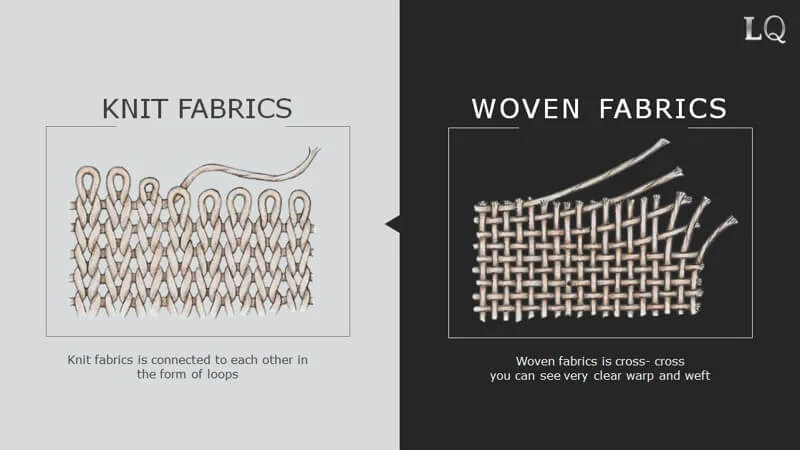
1.2 Types of knit fabrics: Choosing the right one for your project
The world of knit fabrics offers many choices for different garments. Choosing the right one is key. Let’s look at some common types:
- Jersey Knit: Lightweight, stretchy knit, often for t-shirts. Good for beginners and casual tops and dresses. Jersey is a great starting knit for simple projects like tees.
- Rib Knit: Very stretchy knit with vertical ribs, great for cuffs, neckbands, and fitted tops.
- Interlock Knit: Thicker, softer, more stable jersey knit. Easier to sew than jersey, good for baby clothes and smoother t-shirts. Interlock is another good beginner choice, being stable and easy to handle.
- Double Knit: Thicker, stable knit with less stretch. Easier to sew, good for structured knit jackets or skirts. Double knits are forgiving for beginners making structured knit items.
- Rayon Knit: Drapey, silky knit, nice for dresses and flowy tops, but can be slippery to sew.
- Tricot Knit: Smooth, run-resistant knit, often for linings and lingerie.
- Fleece Knit: Soft, warm, napped knit, perfect for sweatshirts and hoodies.
- French Terry Knit: Mid-weight knit with loops on back, good for sweatshirts and joggers. Stable French terry can also be good for beginners wanting slightly heavier knits. Consider the garment you plan to make – a dress needs a different knit than leggings.
2. Essential tools and equipment for sewing knit fabrics
Just like baking needs the right tools, sewing knit fabrics requires specific equipment for best results. While standard sewing supplies can be used, specialized tools designed for stretchy fabrics prevent issues like skipped stitches and puckered seams. Using the right sewing tools for knit fabric leads to professional finishes and a more enjoyable sewing process. Let’s explore essential sewing equipment to ensure your knit sewing success.
2.1 Sewing machine needles: The right point makes a difference
For knit fabrics, sewing machine needles are key. Standard needles can damage knit loops, causing skipped stitches. Ballpoint needles (or jersey needles) have rounded tips to gently push fibers aside, preventing damage and skipped stitches on most knits like jersey and French terry.
For very stretchy knits with spandex, use stretch needles. They are sharper and prevent skipped stitches on highly elastic fabrics. Needle size matters too: smaller sizes (70/10, 75/11) for light knits, medium sizes (80/12, 90/14) for medium knits. Always test needle and thread on fabric scraps first. Choosing the right needle is crucial for good stitches and fabric care.
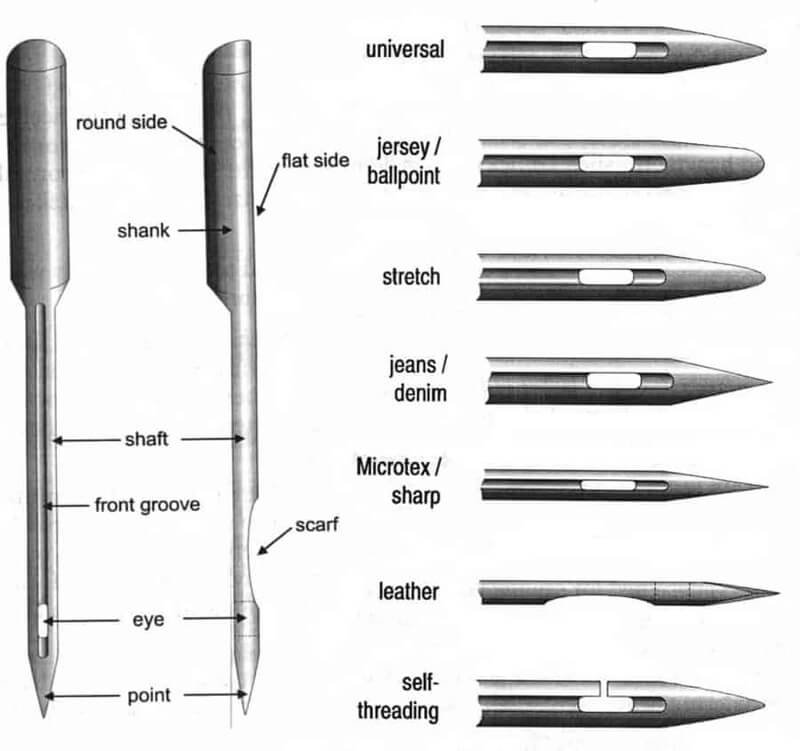
2.2 Sewing machines: Regular vs. serger vs. coverstitch
You can sew knits with a regular sewing machine using zigzag stitches and the right settings. For frequent knit sewing and professional finishes, sergers (overlock machines) are very helpful. Sergers for knit fabric quickly sew seams and finish edges, preventing fraying and adding stretch – ideal for knits. Coverstitch machines are specialized for professional hems and necklines on knits, creating ready-to-wear looking hems.
Beginners don’t need a serger or coverstitch to start. A regular machine works well, and you can finish edges with a zigzag and hems with a zigzag or twin needle. Consider a serger later for faster seam finishing if you sew knits often.
2.3 Other must-have sewing supplies for knit fabrics
A few other supplies are very helpful for sewing knits. Stretch thread is key to prevent popped seams, especially in stretchy areas. A walking foot is a game-changer, preventing fabric stretching and ensuring even seams. Sharp fabric scissors are essential for clean cuts.
Use fine ballpoint pins or fabric clips to avoid snagging knits. Tailor’s chalk or fabric markers help transfer pattern markings accurately. An iron is needed to press seams, but use lower heat to avoid damage. These supplies will make sewing knits much easier and more successful.
3. Mastering sewing techniques for knit fabrics: Step-by-step guide
Successfully sewing knit fabrics is often about mastering a few key techniques. This step-by-step guide will walk you through essential methods, from preparing your fabric to achieving professional-looking finishes. By focusing on these techniques, you’ll minimize common frustrations and create beautifully sewn knit garments. Let’s start at the very beginning: fabric preparation.
3.1 Preparing your knit fabric: Pre-washing and cutting
Always pre-wash knit fabric to prevent shrinkage after sewing. Wash gently in cool or warm water, tumble dry low. Check care labels for delicate knits – hand wash and air dry if needed. Accurate cutting is key for knits. Lay fabric flat on a stable surface.
Use pattern weights instead of pins to prevent shifting. Trace pattern pieces with chalk or marker. A rotary cutter and mat are ideal for smooth, straight cuts. If using fabric scissors, cut with long, even strokes, keeping fabric flat. Proper prep and cutting are essential for sewing success with knits.
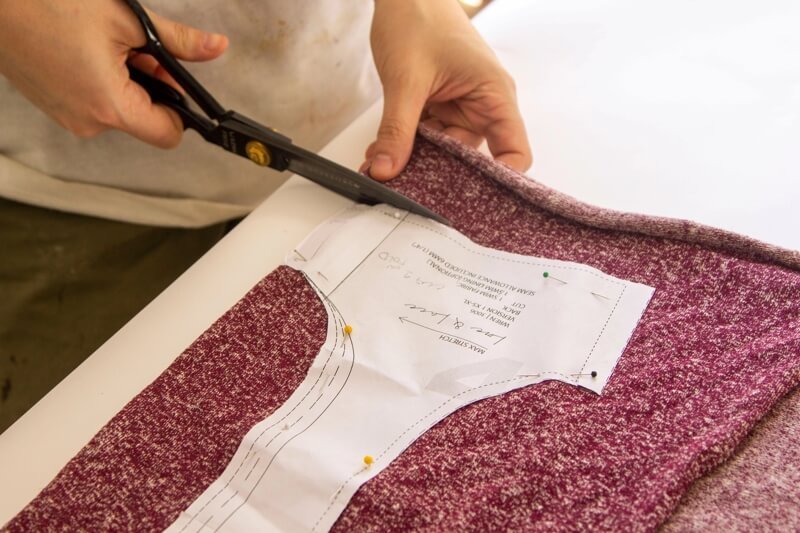
3.2 Choosing the right stitches and sewing machine settings
Zigzag stitches are best for knit seams because they stretch. Use a narrow zigzag for most seams. Stretch stitches are also great for extra elasticity. For edges, use an overlock stitch or wider zigzag to prevent fraying. Adjust sewing machine settings: use a slightly shorter stitch length (around 2.0-2.5mm). A narrow stitch width (0.5-1.0mm) for zigzag is common. Reduce presser foot pressure for smooth fabric feeding. Always test stitches and settings on scrap fabric first.
3.3 Sewing knit seams: Techniques to avoid stretching and wavy seams
Sewing knit seams without stretching or waves requires a gentle approach. Handle knit fabric gently; avoid pulling or stretching it as you sew. Support the fabric weight on your work surface to prevent it from pulling as it goes through the machine.
Using a walking foot is highly recommended as it feeds both fabric layers evenly, preventing stretching. For seam finishes, serged seams are ideal for a clean, stretchy, and professional look. Zigzag seams are a good alternative on a regular machine, providing stretch and preventing fraying.
A straight stitch can be used for stable knits or reinforced seams, but use with caution as it lacks stretch. Sew slowly and steadily, letting the machine feed the fabric – don’t force it.
3.4 Hemming knit fabrics: Achieving professional finishes
Achieving neat hems on knit fabrics is simpler than you might think with the right techniques. For a professional double-stitched look using a regular sewing machine, the twin needle hem is excellent and provides good stretch. The narrow zigzag hem is a straightforward, stretchy option suitable for casual garments.
If you have a coverstitch machine, the coverstitch hem delivers the most professional, ready-to-wear appearance. Single-fold hems are effective for reducing bulk and preventing edges from rolling, especially on lighter weight knits.
Selecting the best hemming method depends on the type of knit and the style of your garment. While a straight stitch hem might work for very stable knits, it’s generally safer to use twin needle, zigzag, or coverstitch methods to ensure hems stretch with the fabric and avoid popped stitches.
4. Troubleshooting common problems when sewing knit fabrics
Even experienced sewists sometimes encounter challenges when working with knit fabrics. The stretchy nature of knits can lead to unique problems not typically seen with woven fabrics. However, don’t get discouraged!
Most knit sewing issues are easily resolved with a little know-how and the right adjustments. Understanding common pitfalls and their solutions will boost your confidence and help you achieve smooth, professional results every time. Let’s tackle some frequent knit sewing frustrations and how to overcome them.
4.1 Dealing with stretching and distorted fabric
Stretching is a common problem that leads to distorted fabric. To prevent this, using a walking foot is highly recommended, as it ensures both layers feed evenly through the machine. Reducing the presser foot pressure can also help the fabric move more naturally. Always handle knit fabric gently; avoid pulling or tugging as you guide it. If minor stretching does occur, carefully applying steam with an iron can help relax the fibers and flatten distorted areas. However, prevention is the best strategy for professional results.
4.2 Preventing wavy seams and puckering
Wavy seams and puckering are other common frustrations, often arising from an uneven fabric feed or incorrect machine tension. Using a walking foot helps layers move together smoothly, reducing waviness. It’s also crucial to check and adjust your sewing machine tension; too much tension can cause puckering. Try slightly loosening the top tension to see if that improves the seam. Ensure the fabric is lying flat and isn’t being bunched or stretched as you sew. Always test your settings on a scrap of fabric first to achieve a smooth, flat seam.
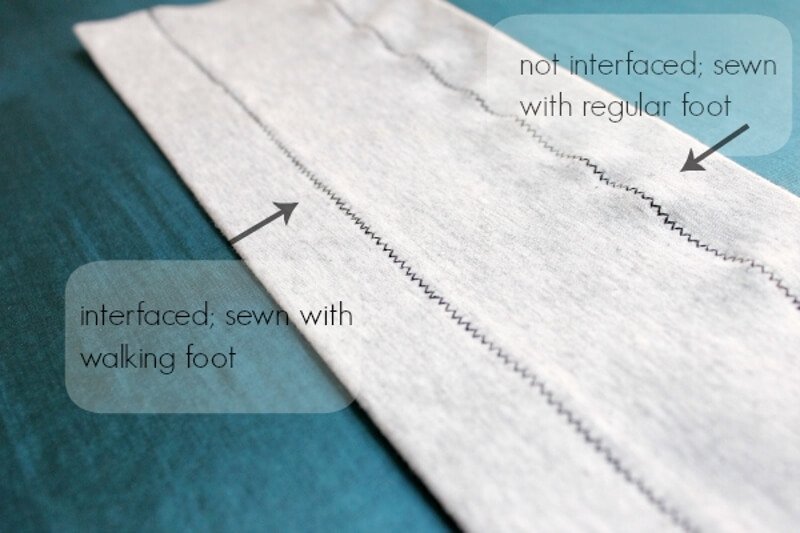
4.3 Addressing skipped stitches and thread breakage
Skipped stitches and thread breakage are frustrating knit sewing problems, often caused by needle, thread, or tension issues. Incorrect needle type is a primary cause of skipped stitches. Knit fabrics need ballpoint needles or stretch needles; standard needles can cause problems. A dull needle is another common culprit, so always use a fresh, sharp needle designed for knits.
Using the wrong thread can also lead to both skipped stitches and thread breakage. Choose a quality polyester or a thread for knit fabric like textured polyester. Avoid cotton thread, which lacks stretch and breaks easily. Tension problems are another key factor. Too tight tension strains the thread, causing breakage and skipped stitches.
To fix these issues, first, change needles. Use a new ballpoint needle for skipped stitches or stretch needle for skipped stitches. If that doesn’t solve it, switch to an appropriate thread type for knits. Finally, adjust for tension problems by slightly loosening the top tension. By checking your needle, thread, and tension, you can usually resolve these problems and sew knits smoothly.
5. Advanced tips for sewing knit fabrics like a pro
5.1 Working with different types of knit fabrics: Specific considerations
Sewing different knit fabrics requires adapting your approach for each type. Sewing jersey knit, being lightweight and often prone to rolling edges, benefits from a narrow hem and gentle handling. For sewing rayon knit, its slippery nature demands extra care. Use a walking foot and consider spray starch to stabilize it before cutting and sewing. Sewing double knit, being thicker and more stable, is generally easier to manage, but bulky seams can be a concern. Press seams open where possible to reduce bulk.
When sewing lightweight knits, use fine needles and thread to avoid weighing down the fabric. For sewing slippery knits, patience and pinning or clipping frequently are key. Sewing thick knits might require a longer stitch length and a more powerful machine if your knit is very dense. For challenging knits, stabilizers for knit fabric, like fusible interfacing strips along seamlines, can provide extra support and prevent stretching. Understanding these fabric-specific sewing tips will help you tackle any knit fabric with confidence.
5.2 Achieving professional finishes: Necklines, armholes, and hems
Professional finishes elevate knit garments. For knit necklines and knit armholes, using rib knit bands provides a classic, stretchy, and neat finish. Cut rib knit bands slightly shorter than the opening for a snug fit. Knit bindings offer another clean finish, especially for lightweight knits. Bindings can be made from self-fabric or contrasting knits.
For knit hems, a coverstitch finish is the gold standard, creating ready-to-wear looking hems with double needles on the front and a looper on the back for stretch. Mastering coverstitch finishes truly enhances the professional appearance. For hems without a coverstitch machine, a twin needle hem or a narrow zigzag hem are excellent alternatives. Garment finishing techniques like understitching neckbands and armhole bindings help them lay flat and prevent rolling. Paying attention to these polished knit garments details results in high-quality, professional-looking knit creations.
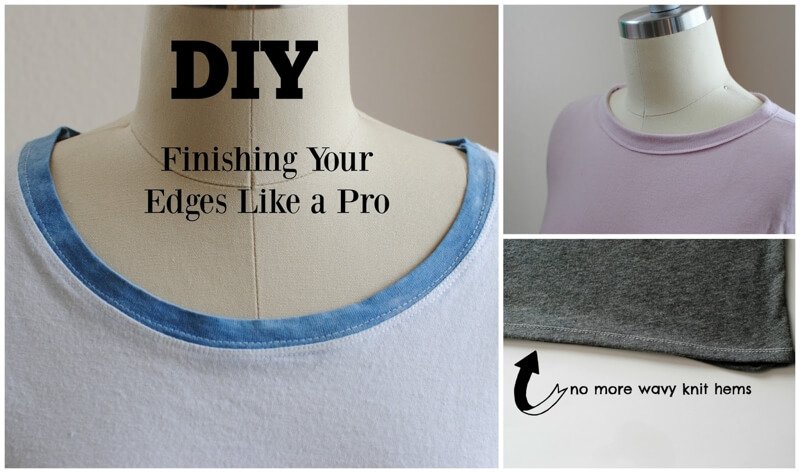
5.3 Creative projects and ideas for sewing with knit fabrics
The versatility of knit fabrics opens up a world of exciting knit fabric projects. For beginner knit projects, start with simple items like comfortable t-shirts or basic leggings. Sewing t-shirts from jersey knit or sewing leggings from cotton lycra are excellent starting points to build confidence. As you advance, explore more complex knit garment ideas. Sewing dresses from rayon knit or sewing knit tops with interesting necklines offer more of a challenge.
Consider DIY knit clothing for every season – cozy fleece hoodies for winter, breezy rayon knit tanks for summer. For advanced knit projects, try fitted knit dresses, color-blocked knit tops, or even knit jackets using stable double knits. Don’t forget accessories! Knit scarves, headbands, and even knit bags are fun and quick projects. Let your creativity flow and explore the endless possibilities of sewing project ideas with knit fabrics!
6. FAQs about sewing with knit fabric
6.1 Can I use a regular needle if I don’t have a ballpoint or stretch needle?
Using ballpoint or stretch needles is best for knits. Regular needles can damage knit loops, causing runs and skipped stitches. If you lack the right needles, a universal needle might work on stable knit scraps as a last resort, but risk remains. Regular needles pierce fabric, while ballpoint/stretch needles are designed for knits.
For best results and to avoid fabric damage, investing in and using ballpoint needles or stretch needles is highly recommended for all knit sewing projects. It’s a small investment for better outcomes.
6.2 What’s the best stitch for knit hems if I don’t have a coverstitch machine?
If you don’t have a coverstitch machine, excellent alternatives for knit hems are the twin needle hem and the narrow zigzag stitch. The twin needle hem creates a professional-looking double row of stitches on the right side and a zigzag on the back, providing good stretch. To do this, use a twin needle and straight stitch, hemming as usual.
The narrow zigzag stitch is simpler and also provides stretch. Simply fold your hem and stitch with a narrow zigzag along the edge. Both methods offer stretchy, durable hems on knit fabrics without needing a specialized coverstitch machine, making them perfect for home sewists.
6.3 How do I prevent knit fabric from rolling at the edges while sewing?
Knit fabric rolling edges can be annoying, but easily managed. Using fabric starch or a stabilizer along the edges before cutting and sewing is very effective. Spray starch lightly stiffens the edge, reducing roll. Fusible interfacing strips or wash-away stabilizer tapes also work well to keep edges flat during sewing.
Another simple technique is stay-stitching. Sew a line of straight stitches just inside the seam allowance along curved or bias-cut edges. This line of stitching helps to stabilize the edge and prevent it from rolling while you handle and sew the fabric. These methods will make working with roll-prone knits much easier.
6.4 Is it really necessary to pre-wash knit fabric?
Yes! Pre-washing knit fabric is absolutely necessary. Knit fabrics often shrink, and some may bleed dye in the first wash. Skipping pre-washing risks your finished garment shrinking and becoming unwearable, or colors running and ruining your project.
Pre-washing prevents these issues, ensuring your sewn garment fits properly and the colors remain true for the life of the garment. It’s a crucial step for garment longevity and achieving the intended fit. Always pre-wash your knit fabrics just as you plan to wash the finished garment.
6.5 What are some easy beginner projects for knit fabric?
Great beginner knit projects include simple items like scarves and headbands. These require minimal sewing and are excellent for practicing straight stitches on knits. Simple t-shirts are also good starting points, especially boxy styles that are less fitted.
Pillowcases are another easy and practical project to learn basic knit sewing techniques. These projects are quick to sew, require minimal pattern pieces, and allow beginners to get comfortable handling knit fabrics and using basic stitches before moving on to more complex garments. They are perfect for building confidence and skills.
7. Packlove – Providing solutions for your garment business
In today’s garment business, especially when creating beautiful knit garments, strong brand recognition is essential. While your knit creations speak volumes through comfort and style, professional branding details solidify your brand’s identity.
Garment labels and clothing tags are crucial elements in this process. Think about the care you put into your knit garments – from fabric selection to perfect finishing. Your labels and tags are the final touch, communicating this quality to customers. They are miniature brand ambassadors, conveying your story and care instructions. High-quality labels and tags elevate the perceived value of your knit garments, making them retail-ready and enhancing your brand image.
Packlove understands clothing branding deeply. With over 8 years of garment industry expertise, we specialize in label and tag services. We offer tailored solutions to meet your unique branding needs. Whether you need classic woven labels or modern printed tags, Packlove is your dedicated partner.
Let us help you professionally present your knit garments, ensuring each piece proudly carries your brand identity. For businesses aiming to enhance their brand and make a lasting impression, Packlove provides the experience and dedication to bring your vision to life.
Read more:
Creating beautiful knit garments is absolutely achievable! By mastering the basics and understanding the unique properties of these fabrics, you can confidently tackle any knit project. The key is to use the right tools, choose appropriate stitches, and practice gentle handling. Don’t be afraid to experiment to refine your skills. With a little patience and the knowledge you’ve gained, you’ll unlock a rewarding sewing experience and enjoy creating comfortable, stylish knitwear. Embrace the stretch and start your knit sewing journey today!






















